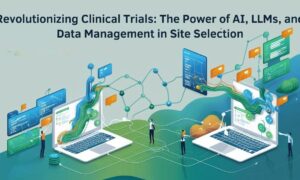In this digital era, organizations rapidly transform their data management strategies through innovative cloud architectures. A groundbreaking research paper by Prashanth Reddy Kora, a computer science researcher from a leading American university, reveals that 87% of enterprises have embraced multi-cloud approaches, while 72% are implementing hybrid cloud solutions. This significant shift reflects how businesses are adapting to meet the challenges of explosive data growth, enhanced security requirements, and the need for greater operational flexibility in today’s dynamic digital landscape.
The Dawn of Multi-Cloud Innovation
The digital transformation landscape is witnessing a significant shift as organizations embrace sophisticated cloud strategies. Recent surveys indicate that 87% of enterprises have adopted multi-cloud approaches, while 72% are implementing hybrid cloud solutions. This dramatic increase reflects a fundamental change in how businesses manage their digital infrastructure and data resources.
Transforming Data Management Through Hybrid Solutions
Hybrid cloud architectures are emerging as robust solutions for organizations seeking to balance security with scalability. These systems combine on-premises infrastructure with public and private cloud services, enabling businesses to maintain sensitive data locally while leveraging the flexibility of cloud platforms. The approach has proven particularly effective for organizations with strict data sovereignty requirements and complex regulatory compliance needs.
Security and Performance Optimization
Integrating multiple cloud environments represents a significant leap forward in enterprise computing capabilities. Organizations implementing these sophisticated architectures are experiencing remarkable improvements, with studies showing a 37% boost in application performance compared to traditional single-cloud deployments. The advancement extends beyond performance gains—unified security monitoring across diverse cloud environments has led to a 33% reduction in security incidents. This enhanced protection is particularly crucial as data breach costs in hybrid environments average $3.61 million. The implementation of comprehensive cloud security solutions has proven transformative, with organizations reporting significant improvements in threat detection, incident response times, and overall system resilience.
Cost Efficiency and Resource Management
Financial benefits have become a key driver in cloud architecture adoption, with organizations achieving remarkable cost efficiencies. Studies show that hybrid cloud archiving strategies can reduce data storage costs by up to 50%. This optimization is particularly impactful since data storage consumes approximately 17% of enterprise IT budgets, offering substantial savings across operations.
Innovation in Integration and Automation
The evolution of cloud technologies has unleashed a wave of innovation in data integration and automation. Advanced ETL tools and virtualization technologies now enable seamless data movement across cloud environments, transforming how organizations manage information. This technological leap is reflected in the data integration market’s projected growth to $19.6 billion by 2026.
Future-Ready Infrastructure
The landscape of cloud computing is undergoing a dramatic transformation, with experts predicting that 95% of new digital workloads will be cloud-native by 2025. This shift demonstrates how organizations are fundamentally reimagining their IT infrastructure, prioritizing flexibility, scalability, and operational efficiency.
Addressing Implementation Challenges
While the benefits are substantial, organizations face several challenges in implementing these advanced cloud architectures. Key concerns include data integration complexity, security requirements, and skill gaps. However, the development of sophisticated management tools and increasing expertise in cloud technologies are helping organizations overcome these hurdles effectively.
Charting the Path Forward
The future of enterprise computing is rapidly evolving toward sophisticated cloud architectures that offer unprecedented adaptability to changing business demands. Organizations implementing these advanced strategies are witnessing a 37% improvement in application performance and up to 50% reduction in data storage costs. With global data volumes projected to reach 175 zettabytes by 2025, these cloud-native solutions are becoming essential for managing exponential data growth while maintaining robust security and regulatory compliance. Forward-thinking enterprises are not just adopting these technologies—they’re using them to drive innovation, enhance operational efficiency, and build resilient digital infrastructures for the future.
In conclusion, as highlighted in Prashanth Reddy Kora‘s research, the cloud computing landscape stands at a pivotal juncture. The widespread adoption of multi-cloud and hybrid architectures is fundamentally transforming how organizations manage their digital assets. With projected market growth reaching $171.9 billion by 2025, these sophisticated cloud strategies are not just reshaping enterprise computing—they’re creating new possibilities for innovation, efficiency, and competitive advantage in an increasingly data-driven world.



































